Rempe Group member Caroline Hackett investigates the role of alluvium deposits in the process of groundwater recharge from the Nueces River to the underlying Trinity and Edwards Aquifers in south-west Texas. Using stream discharge gain-loss surveys, dye tracer testing, geophysical surveys, and water chemistry measurements, we study the storage capacity and transit times of surface water through alluvial deposits. Caroline is co-advised by Dr. Marcus Gary, and interned with him at the Edwards Aquifer Authority during summer 2017.
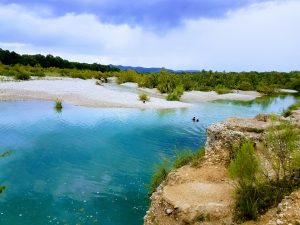
The upper Nueces River in Uvalde County, TX, has extensive alluvial deposits of mostly chert cobbles that overlay the limestone units of the Trinity Aquifer.
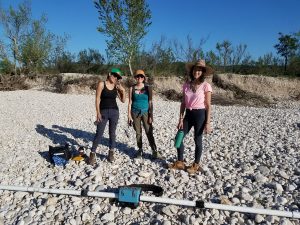
We use geophysical methods including electrical resistivity, ground penetrating radar, and electromagnetic surveying with the EM31, shown above with Amy, Bianca, and Kindra during the spring 2017 Karst Hydrogeology course.
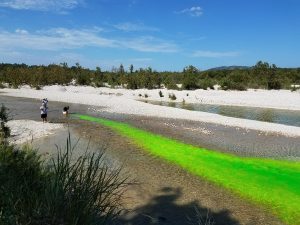
We use non-toxic fluorescent dye to investigate whether the dye travels through subsurface flowpaths through alluvium adjacent to the Nueces River.
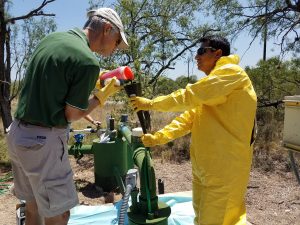
During August 2017, we also injected fluorescent dye into groundwater wells with help from Steve and Anastacio at the Edwards Aquifer Authority.
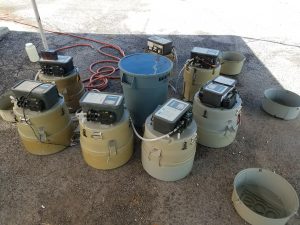
We use ISCO automatic water samplers to continuously monitor for the presence of dye during tracer tests.
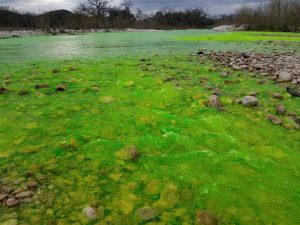
Uranine dye turns the Nueces River a fluorescent green while helping us determine whether the river water is the source of nearby springs.
© 2025 Jackson School of Geosciences, The University of Texas at Austin

